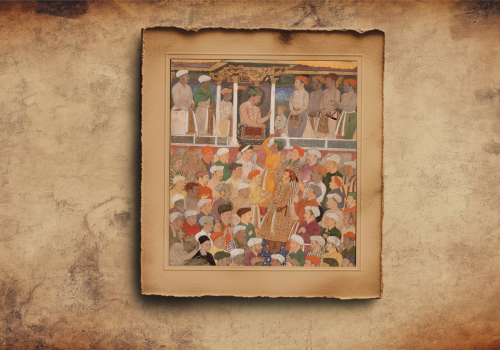The latter wondered why he had been called to Delhi. To quote Bhai Santokh Singh, Sri Gur Pratdp Suraj Granth, he said, “I rule over no territory, I owe the king no taxes, nor do I want anything from him. Of what avail will this meeting be?” He, therefore, deputed Ram Rai to represent him, giving him the exhortation: “Answer squarely and without fear any questions the Emperor may ask. Exhibit no hesitation. Read the Granth attentively as you make halts on the way. The Guru will protect you wherever you might be.” Accompanied by Diwan Dargah Mall and some other Sikhs, Ram Rai left Kiratpur for Delhi on 30 March 1661.
Ram Rai made a very favourable impression on the Emperor by virtue of the many miracles he displayed, but he overreached himself when, to please the Emperor, he deliberately misread one of the verses from the (Guru) Granth Sahib and substituted the word beimdn, i.e. faithless, or evil, for Musalman. The original hymn appearing in Guru Nanak, Asd ki Vdr, read, “The clay from a Musalman`s grave is kneaded into the potter`s lump. It is shaped into vessels and bricks and then burns in the kiln….” The hymn reflects on the essentially conditioned state of man against the mystery and absoluteness of Divine power and on the futility of dividing humanity by rites of cremation or burial (practised by Hindus and Muslims, respectively).
Aurangzib and his Muslim advisers, however, equated the burning of a Muslim`s remains to eternal damnation of his soul. Hence their objection to the hymn. Baba Ram Rai`s misquotation satisfied the Emperor but displeased the Sikhs who sent a report to Guru Har Rai. The Guru anathematized Ram Rai for the sacrilege he had committed in altering what was unalterable and debarred him from his presence. Guru Har Rai, before his death on 6 October 1661, chose his younger son, Har Krishan, to be his spiritual successor instead of Ram Rai. Ram Rai continued to enjoy imperial patronage.
He was granted a jdgir in the Garhval plateau to which he shifted from Delhi establishing a derd or missionary centre in the dun (valley), where from the place came to be known as Dehra Dun. He preached the gospel of Guru Nanak, but the Sikhs by and large shunned him and his followers, collectively dubbed as Ramraias. Ramraias still form a dissident sect of the Udasi Sikhs. Ram Rai met Guru Gobind Singh during the latter`s stay at Paonta (1685-88). He died at his dead on 4 September 1687.
References :
1. Santokh Singh, Bhai, Sri Gur Pratap Suraj Granth. Amritsar, 1927-35
2. Padam, Piara Singh, ed., Sau Sakhi. Patiala, 1986
3. Teja Singh and Ganda Singh, Sikh Itihas. Patiala, 1983
4. Harbans Singh, The Heritage of the Sikhs. Delhi, 1983
5. Gupta, Hari Ram, History of Sikh Gurus. Delhi, 1973


